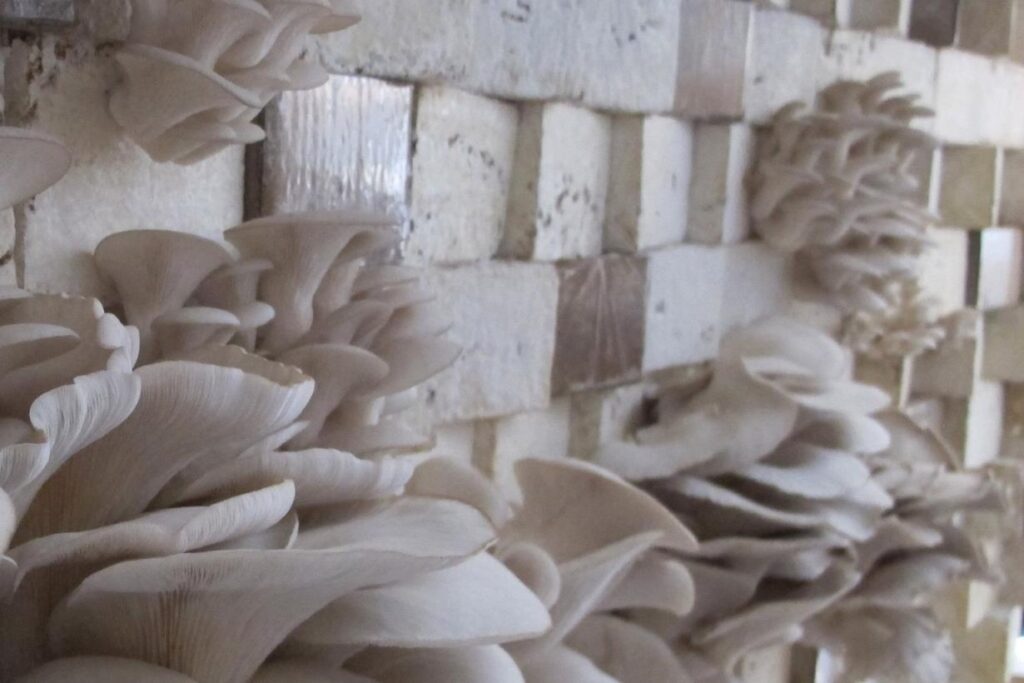
This installation by AFJD Studio explores the role of biotechnology in the future of architecture. Combining cellulosic wood waste and mycelium, the root structure of mushrooms, as a binder creates an advanced biocomposite building material that is fully biodegradable. Assembled into the mockup wall, the individual blocks fuse together into a monolithic whole through the production of chitin, a hard shell naturally produced by the mycelium. The wall produces edible oyster mushrooms, providing a source of food as well as structural support.
The installation of mycelium biocomposites and video projections provokes questions about the contradictions inherent in the relationship of sustainable aspirations to market forces. Vancouver uses global capital to finance its aspiration to reinvent itself as the world’s greenest city. Despite some of the most progressive urban planning policies in North America, buildings are erected and razed at a frenetic pace in the pursuit of ever-increasing returns on investment. Once-profitable buildings are replaced with more effective generators of revenue long before the useful life of their materials is over.
Instead of building for the ages, sustainability in the context of these rapid cycles of demolition and speculative construction calls for intelligent biodegradable and edible architecture that anticipates its future destruction by encoding organic decay into the materials from which it is constructed. Mycelium Mockup engages with these elements of decay and renewal through the exploration of a new material.
Photography courtesy of Krista Jahnke.